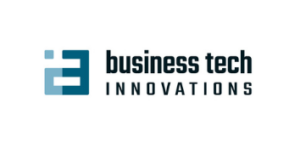
Small businesses are increasingly turning to cloud-based solutions for managing their financial accounting. Migrating accounting software to the cloud offers numerous benefits, including improved accessibility, scalability, and data security. However, the process of transitioning to cloud-based accounting software requires careful planning and execution. This checklist serves as a comprehensive guide for small businesses looking to migrate their financial accounting software to the cloud efficiently and effectively.
1. Assess Your Current Accounting Software
- Evaluate the features, functionality, and limitations of your existing accounting software.
- Identify specific pain points or areas for improvement that prompt the need for migration to the cloud.
2. Define Your Objectives and Requirements
- Determine your business goals and objectives for migrating to cloud-based accounting software.
- Outline your specific requirements and preferences in terms of features, customization options, integration capabilities, and budget constraints.
3. Research Cloud Accounting Solutions
- Explore different cloud accounting software options available in the market.
- Compare features, pricing plans, user reviews, and customer support offerings to find the best fit for your business needs.
4. Conduct a Data Audit
- Review your existing financial data to ensure accuracy, completeness, and consistency.
- Identify any data cleanup or migration tasks required before transferring data to the cloud.
5. Develop a Migration Plan
- Create a detailed timeline and roadmap for the migration process, including key milestones and deadlines.
- Allocate resources and designate responsibilities for each stage of the migration.
6. Backup Your Data
- Backup your financial data and files to prevent loss or corruption during the migration process.
- Implement robust data backup procedures and ensure redundancy to safeguard against potential data loss.
7. Customize and Configure Your Cloud Accounting Software
- Customize the settings and configurations of your chosen cloud accounting software to align with your business processes and workflows.
- Set up user permissions, access controls, and security settings to protect sensitive financial information.
8. Train Your Staff
- Provide comprehensive training and support to your employees on using the new cloud accounting software.
- Offer ongoing guidance and resources to ensure a smooth transition and adoption of the new system.
9. Test and Validate
- Conduct thorough testing and validation of the cloud accounting software to identify and address any issues or discrepancies.
- Validate data accuracy and integrity to ensure consistency between the old and new systems.
10. Go Live and Monitor Performance
- Execute the migration plan according to the established timeline and launch the cloud accounting software.
- Monitor system performance, user feedback, and key metrics to assess the effectiveness of the migration and address any issues promptly.
11. Choose the Right Cloud Service Provider
- Research and evaluate reputable cloud service providers that specialize in accounting software migration.
- Consider factors such as reliability, data security measures, scalability, and customer support when selecting a cloud service provider.
- Look for cloud service providers that offer seamless integration with your chosen accounting software and provide robust migration assistance and support.
Conclusion
Migrating financial accounting software to the cloud can streamline operations, improve efficiency, and enhance financial visibility for small businesses. By following this checklist and taking a systematic approach to migration, small businesses can successfully transition to cloud-based accounting solutions and unlock the full potential of digital finance management. Choosing the right cloud service provider is crucial for ensuring a smooth and successful migration process, so be sure to conduct thorough research and select a provider that meets your specific needs and requirements.




